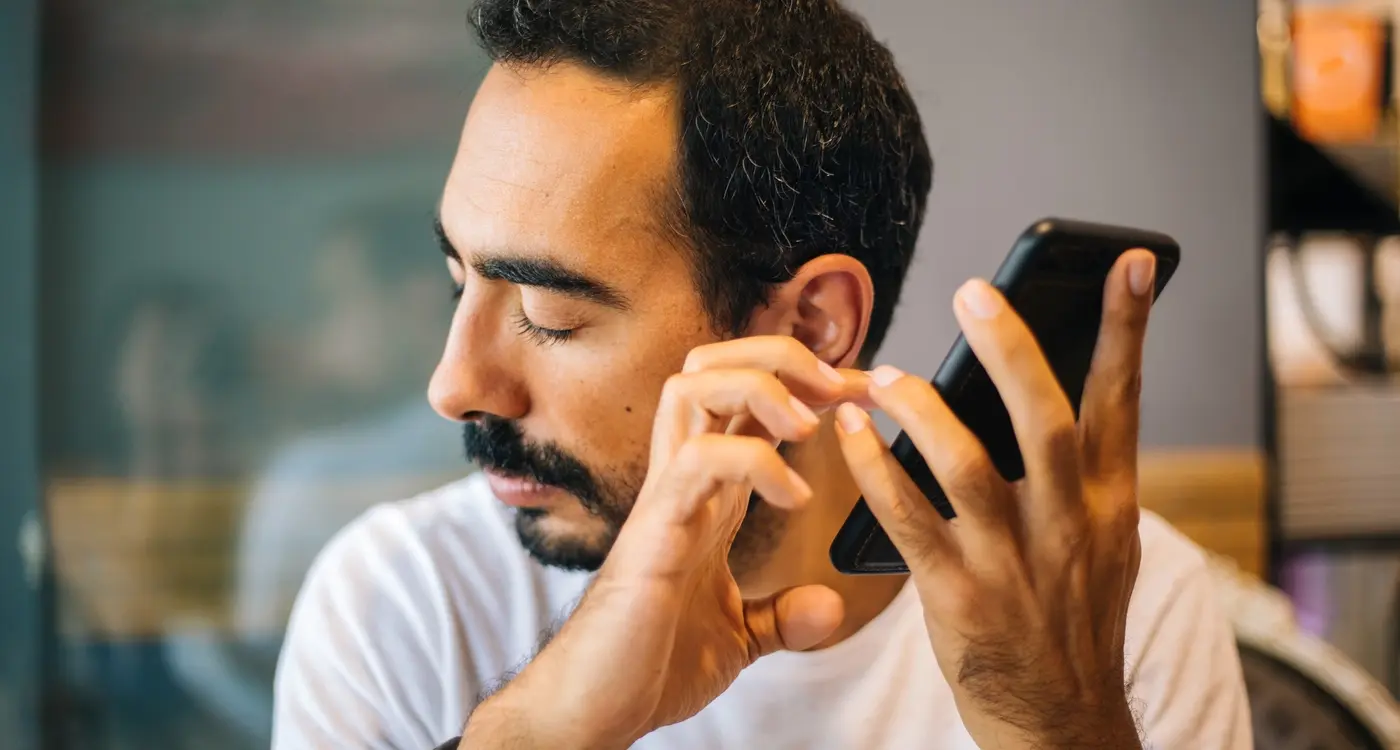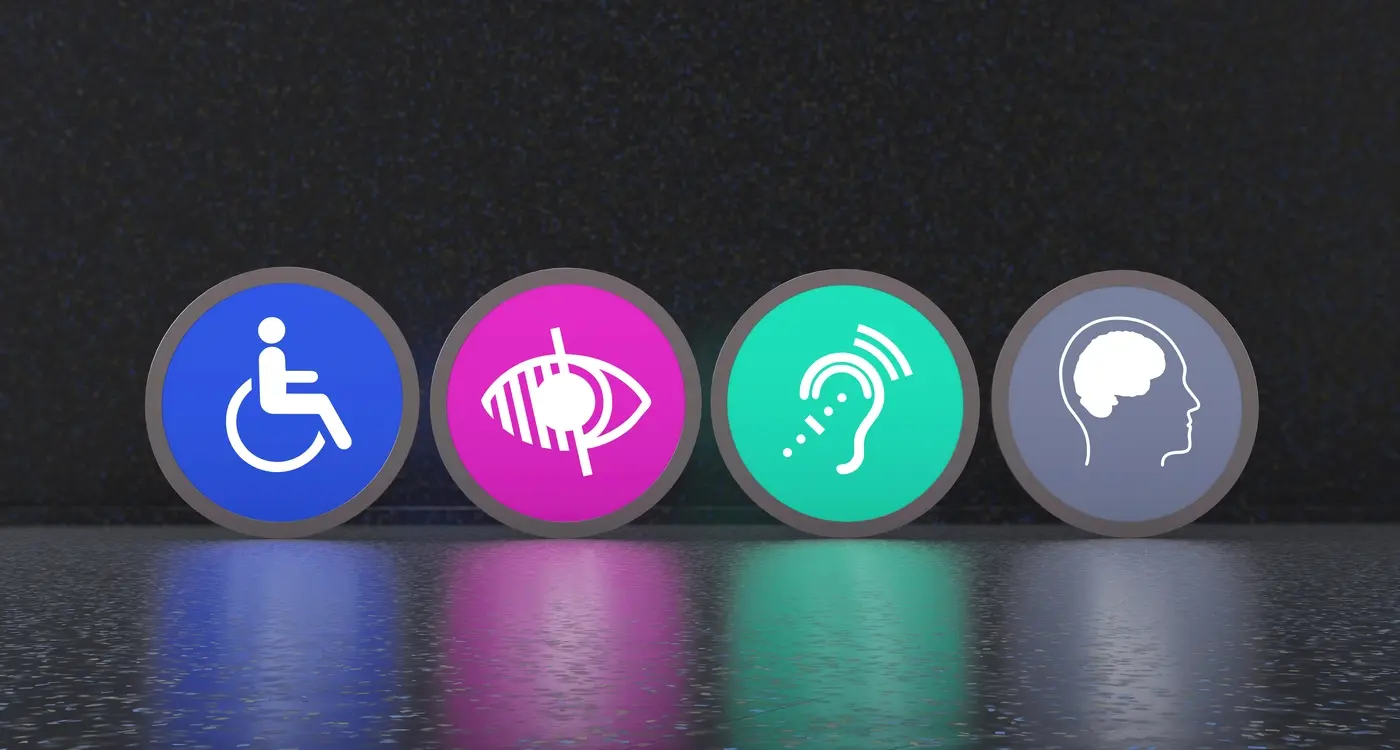Mobile App Development: Building for Accessibility and Inclusion
In today's interconnected world, mobile apps have become an essential part of our daily lives. From ordering groceries to managing our finances, these digital tools shape how we interact with the world around us. However, not everyone experiences these applications in the same way. As we navigate through 2025, the importance of creating mobile apps that are truly accessible and inclusive has never been more crucial.
Accessibility isn't about compromise - it's about creating better experiences for everyone, regardless of their abilities or circumstances.
Think about the last time you struggled to use an app because the text was too small, or the colours were hard to distinguish. Perhaps you've tried to use your favourite app one-handed whilst carrying shopping bags, or attempted to navigate a complex menu while walking. These everyday challenges highlight why accessible mobile app development isn't just about supporting users with disabilities – it's about creating better experiences for everyone.
Throughout this guide, we'll explore how to create mobile applications that work seamlessly for all users, regardless of their abilities or circumstances. We'll share practical insights gained from eight years of designing and developing inclusive apps, while breaking down complex accessibility concepts into straightforward, actionable advice.
Whether you're a developer, designer, project manager, or business owner, understanding accessibility in mobile app development isn't just a nice-to-have – it's becoming a fundamental requirement. Let's embark on this journey together and discover how we can make the digital world a more inclusive place, one app at a time.
What is Mobile App Accessibility?
Imagine trying to order your favourite takeaway through a food delivery app, but you can't see the screen clearly. Or picture attempting to book a taxi whilst dealing with limited mobility in your hands. These everyday scenarios highlight why mobile app accessibility isn't just a technical requirement—it's about creating experiences that work for everyone.
Mobile app accessibility refers to designing and developing applications that people of all abilities can use effectively. It's rather like ensuring a building has both stairs and ramps—we're creating multiple ways for people to access and interact with digital content.
Core Elements of Mobile App Accessibility
- Perceivable content: Making sure all users can understand the information, whether through sight, sound, or touch
- Operable interface: Ensuring everyone can navigate and use the app's features, regardless of how they interact with their device
- Understandable design: Creating intuitive layouts and clear instructions that make sense to all users
- Robust functionality: Building apps that work reliably across different devices and assistive technologies
In our experience at Glance, accessibility isn't about limiting design—it's about expanding possibilities. When we make apps more accessible, we often discover innovative solutions that benefit all users. For instance, voice commands, originally designed for users with motor impairments, are now loved by busy parents cooking with messy hands!
As we move through 2025, accessibility has become more crucial than ever, with over a billion people worldwide living with some form of disability. Creating accessible apps isn't just about compliance—it's about opening doors and ensuring technology truly serves everyone.
Understanding Different User Needs
When we approach mobile app development, it's crucial to remember that our users come from all walks of life, each with unique requirements and challenges. At its core, inclusive design isn't about creating special features for a minority – it's about making our apps work brilliantly for everyone.
Common User Accessibility Requirements
Think about your grandparents trying to read tiny text on their phones, or imagine attempting to use your mobile banking app whilst carrying shopping bags. Accessibility isn't just about permanent disabilities; it's about making apps that work in real-world situations.
- Visual impairments: From colour blindness to complete vision loss
- Motor challenges: Including tremors, limited mobility, or temporary injuries
- Hearing difficulties: Ranging from partial to complete hearing loss
- Cognitive differences: Including dyslexia, ADHD, and autism
- Situational limitations: Like bright sunlight or noisy environments
In our experience developing mobile applications since 2017, we've learned that understanding these needs isn't just about reading guidelines – it's about genuine empathy and real-world testing. Many of us have experienced temporary accessibility challenges, like trying to use our phones with a cracked screen or whilst wearing gloves.
Remember that accessibility features often benefit all users, not just those with specific needs. For example, clear navigation and good contrast make apps easier for everyone to use, especially in challenging conditions like bright sunlight.
By considering these diverse needs early in the mobile app development process, we create better experiences for everyone – and that's what truly inclusive design is all about.
Key Accessibility Features in Mobile Apps
When we think about mobile app accessibility, it's rather like ensuring everyone can enjoy their favourite café - whether they use a wheelchair, have visual impairments, or face other challenges. Let's explore the essential features that make mobile apps truly inclusive for all users.
Visual Accessibility Features
Just as we might need different lighting levels to read comfortably, apps need flexible visual options. High contrast modes, text resizing capabilities, and support for screen readers are fundamental. Think of VoiceOver for iOS or TalkBack for Android as friendly guides, describing everything on screen for users who can't see it clearly. We've found that customisable font sizes and colour schemes aren't just helpful for those with visual impairments - they make apps more comfortable for everyone, especially during those late-night scrolling sessions!
Interactive Elements and Navigation
Remember trying to press those tiny buttons with cold fingers in winter? Now imagine facing that challenge every day. That's why touch targets need to be generously sized (at least 44x44 pixels), with ample spacing between them. Voice commands and gesture controls aren't just modern conveniences - they're essential tools for users with motor impairments. Alternative text for images, closed captions for videos, and clear, logical navigation patterns help everyone move through your app smoothly, rather like well-placed signs in a shopping centre.
The beauty of these features is that they often enhance the experience for all users, not just those with specific needs. For instance, those automatic captions that help deaf users? They're brilliant for watching videos in noisy environments too!
Design Guidelines for Inclusive Apps
Great design is accessible design - it's not just about making apps look good, it's about making them work brilliantly for everyone.
When it comes to mobile app development, creating inclusive designs isn't just a nice-to-have - it's essential. At its heart, inclusive design is about understanding and embracing human diversity, and we've learned that following a few key guidelines can make all the difference.
Core Design Principles
Start with colour contrast - we always ensure text stands out clearly against backgrounds, making it readable for users with varying degrees of vision. Think about how your gran might struggle with tiny grey text on a white background! Also, aim for touch targets (like buttons) that are at least 44x44 pixels - this helps everyone from rugby players with large fingers to those with motor control challenges.
Layout and Navigation
Keep your layouts consistent and logical. Just as you'd appreciate clear signage in a shopping centre, users need intuitive navigation in your app. Use clear headings, maintain adequate spacing between elements, and ensure content flows naturally. Remember to provide multiple ways to interact with features - if someone can't use touch gestures, they should have alternative methods available.
When designing forms within your mobile application, always include clear error messages and simple error recovery. Think about how frustrating it is when you're filling out a form and can't figure out what went wrong! We recommend using descriptive labels instead of colour alone to indicate errors - this helps colour-blind users and makes the experience better for everyone.
Technical Aspects of Accessible Development
When it comes to making mobile apps truly accessible, the technical implementation is where the rubber meets the road. As developers who've spent countless hours perfecting these techniques, we understand that this can seem daunting at first – rather like trying to solve a Rubik's cube whilst blindfolded!
Core Technical Considerations
The foundation of accessible development lies in proper semantic markup and structured coding. Think of it as building a house – you need a solid framework before adding the decorative elements. This means implementing proper heading hierarchies, meaningful labels for interactive elements, and ensuring all functionality is available through keyboard or assistive device navigation.
Implementation Essentials
Modern development frameworks like Swift and Kotlin offer built-in accessibility APIs that make implementation more straightforward. For instance, on iOS, you'll want to use UIAccessibility protocols, while Android developers should leverage the AccessibilityService class. It's a bit like having a Swiss Army knife of accessibility tools at your disposal – each serving a specific purpose.
Remember to maintain proper colour contrast ratios (at least 4.5:1 for normal text), implement clear focus indicators, and ensure touch targets are at least 44x44 pixels. These might seem like small details, but they make a world of difference to users with various needs. Just imagine trying to tap a tiny button whilst riding on a bumpy bus – now multiply that challenge for someone with motor difficulties.
By incorporating these technical elements during the development phase rather than as an afterthought, you'll create a more robust and inclusive application that truly serves all users. After all, good accessibility isn't just about ticking boxes – it's about opening doors for everyone.
Testing Your App for Accessibility
Just like trying on a new pair of shoes before buying them, testing your mobile app for accessibility is crucial to ensure it works well for everyone. At Glance, we've learned that thorough accessibility testing can make the difference between an app that merely works and one that truly serves all users.
Manual Testing Approaches
Start by experiencing your app the way your users do. Try navigating your mobile app development project using only a screen reader, or control it exclusively with voice commands. It's eye-opening to attempt common tasks without looking at the screen or using just keyboard controls. We often ask our team members to wear simulation glasses that mimic various visual impairments – it's humbling and incredibly informative.
Automated Testing Tools
While human testing is irreplaceable, automated tools can help catch many accessibility issues early. Tools like Accessibility Scanner for Android and VoiceOver for iOS can identify common problems like poor contrast ratios or missing alternative text. Think of these tools as your first line of defence – they're like spell-checkers for accessibility.
Remember to test your app across different devices, operating systems, and assistive technologies. What works perfectly on one device might be problematic on another.
Create an accessibility testing checklist and make it a regular part of your development sprints. Include tasks like testing with screen readers, checking colour contrast, and verifying keyboard navigation. This helps ensure accessibility isn't treated as an afterthought.
The most valuable insights often come from testing with actual users who rely on accessibility features daily. Their real-world experience and feedback are worth their weight in gold.
Legal Requirements and Standards
When it comes to mobile app accessibility, it's not just about doing what's right - it's also about following the law. Much like ensuring shops have wheelchair ramps, digital spaces need to be accessible to everyone. Let's break down the key legal requirements you need to know about.
Global Standards and Guidelines
The Web Content Accessibility Guidelines (WCAG) 2.2, while primarily designed for websites, have become the gold standard for mobile apps too. These guidelines aren't just suggestions - many countries have incorporated them into their accessibility laws. Think of WCAG as your accessibility Highway Code - it helps everyone navigate digital spaces safely and effectively.
Regional Requirements
In the UK, the Equality Act 2010 mandates that digital services, including mobile apps, must be accessible to people with disabilities. Similar legislation exists worldwide - the Americans with Disabilities Act (ADA) in the US and the European Accessibility Act in the EU. As of 2025, these requirements are becoming increasingly stringent.
Here's a sobering thought: failing to meet accessibility standards isn't just about potential legal troubles - it's about excluding roughly 15% of the global population from using your app. It's rather like building a shop but putting up an 'unwelcome' sign for one in every seven customers.
The good news is that meeting these requirements isn't as daunting as it might seem. Start by incorporating accessibility from the beginning of your development process rather than treating it as an afterthought. Remember, these standards aren't barriers to creativity - they're frameworks that help ensure your innovative app can be enjoyed by everyone.
The Business Case for Inclusive Apps
When it comes to mobile app development, creating accessible and inclusive applications isn't just the right thing to do – it makes solid business sense. Think about it: approximately 15% of the global population lives with some form of disability. That's over a billion potential users who might be excluded from using your app if accessibility isn't prioritised.
Accessibility isn't a feature - it's a fundamental right that transforms into business opportunity. Every barrier we remove opens doors to countless new users.
The Financial Impact of Inclusive Design
Let's talk numbers. In 2025, the accessible technology market is valued at over £300 billion globally. By making your mobile app accessible, you're not just tapping into this market – you're future-proofing your business. We've seen countless examples where inclusive apps have outperformed their competitors simply because they cater to a broader audience.
Beyond Direct Benefits
The benefits extend far beyond direct user accessibility. Inclusive mobile app development often leads to improved usability for everyone. Think about how voice commands, initially designed for users with motor impairments, are now beloved by multitasking parents and busy professionals alike. Plus, accessible apps typically rank better in app stores, have higher user retention rates, and generate more positive reviews.
Consider also the brand reputation benefits. In an age where social responsibility matters more than ever, companies known for their inclusive practices often enjoy stronger customer loyalty and positive word-of-mouth. It's like that corner shop that installed a ramp – they didn't just gain wheelchair users as customers, they won the hearts of the entire community.
Success Stories in Accessible Mobile Apps
The world of accessible mobile apps is filled with inspiring success stories that demonstrate how thoughtful design can make a genuine difference in people's lives. Let's explore some remarkable examples that have set new standards for inclusion.
Game-Changing Apps That Made a Difference
- Be My Eyes - This revolutionary app connects blind and visually impaired users with sighted volunteers through video calls. Since its launch, it has helped over 2 million users with daily tasks, from reading expiry dates to navigating new environments.
- Microsoft Soundscape - Created to help visually impaired people explore their surroundings, this app uses 3D audio technology to create a sound-based map of the environment. Users have reported feeling more confident and independent during outdoor navigation.
- Voice Dream Reader - This text-to-speech app has transformed how people with dyslexia and visual impairments consume written content. One university student shared how it helped them complete their degree, previously thinking higher education was out of reach.
- Wheel Guide - Developed with input from wheelchair users, this app maps accessible routes and has built a community of contributors. It's helped thousands of people plan journeys with confidence.
What makes these apps truly successful isn't just their technical excellence - it's the profound impact they've had on users' daily lives. They've shown that accessible design isn't just about compliance; it's about creating solutions that empower everyone to participate fully in our digital world.
The success of these apps also highlights an important business truth: when you design for accessibility, you often create better solutions for all users. For instance, Voice Dream Reader's clear audio outputs are now popular among people who prefer listening to reading during their commute.
Conclusion
As we've explored throughout this guide, creating accessible mobile apps isn't just about ticking boxes or meeting legal requirements – it's about opening doors and creating opportunities for everyone to participate in our digital world. Mobile app development has evolved significantly since smartphones first appeared in our pockets, and accessibility has become an essential cornerstone of quality development.
Think about it: when we design with accessibility in mind, we're not just helping users with disabilities; we're creating better experiences for everyone. It's like adding a ramp to a building – while it's essential for wheelchair users, it also helps parents with prams, delivery workers, and elderly visitors. The same principle applies to mobile applications.
The journey to creating accessible apps might seem daunting at first, but remember that every small step counts. Whether it's implementing proper colour contrast, adding clear navigation patterns, or ensuring screen reader compatibility, each feature brings us closer to a more inclusive digital world. As we've seen through various success stories, accessible apps often lead to increased user satisfaction, broader market reach, and stronger brand reputation.
Looking ahead to the rest of 2025 and beyond, accessibility in mobile app development will only grow in importance. As technology continues to evolve, new opportunities and challenges will emerge. The key is to stay committed to inclusive design principles and keep learning from user feedback and experiences.
Remember, creating accessible apps isn't just the right thing to do – it's good business sense, and it's how we ensure that the amazing potential of mobile technology truly benefits everyone.
Share this
Subscribe To Our Blog
You May Also Like
These Related Stories

From Buttons To Braille: How We Design Apps For Every User

5 Simple Ways To Make Your App More Accessible (Without Breaking The Bank)





